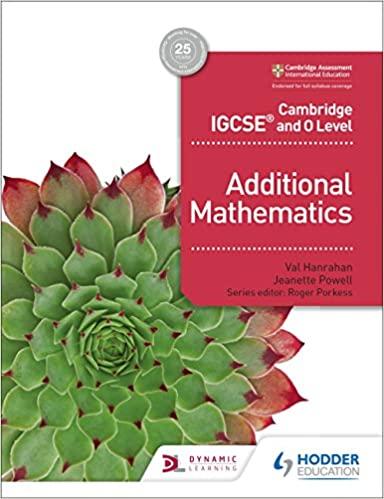Question
List and Explain: Differentiate between deductive and inductive arguments. Give one example of each. Indicate whether your deductive argument is valid or invalid. List the
- List and Explain:
- Differentiate between deductive and inductive arguments. Give one example of each. Indicate whether your deductive argument is valid or invalid.
- List the three essential elements of experimental design. Explain the ways in which each element is accomplished in the design of an experiment.
- List and explain three characteristics of a well-designed experiment.
- An employee working in the produce department of a grocery store in the afternoons wonders how much the ripeness of bananas affects the sale of the fruit. He collected data for 10 days on the total number of pounds of bananas sold that were green, yellow, and brown bananas.
- State an appropriate hypothesis for the experiment.
- Identify the independent variable.
- Identify the dependent variable.
- Name a variable that should remain constant during the experiment.
- The dependent variable is so called because:
A) scores on this variable are hypothesized to depend on, and vary with, the value of the independent variable
B) the outcome of an experiment is hypothesized to depend on the effect that this variable has on the independent variable
C) scores on this variable can be expected not to vary in an experiment
D) scores on this variable depend on how they are manipulated by the researcher
- Application of Basic Statistics:
Comparing the effectiveness of two herbicides (A and B) to control giant foxtail weed
Herbicide A | Herbicide B | ||||||
Rep | % Control | Dev from mean | (Dev)2 | % Control | Dev | (Dev)2 | Total |
1 | 85 | 99 | |||||
2 | 80 | 98 | |||||
3 | 85 | 95 | |||||
4 | 75 | 99 | |||||
Total | Y.. | ||||||
Mean |
I. State the null and alternate hypotheses for this research
HO____________________________________
HA___________________________________
II. Calculate:
1. Mean ()
Herbicide A _________________________
Herbicide B _________________________
2. Sum of squares (SS)
Herbicide A _________________________
Herbicide B _________________________
3. Variance (S2)
Herbicide A _________________________
Herbicide B _________________________
4. Standard deviation (S)
Herbicide A _________________________
Herbicide B _________________________
5. Coefficient of variation (CV)
Herbicide A _________________________
Herbicide B _________________________
6. Standard error of the mean (S)
Herbicide A _________________________
Herbicide B _________________________
7. The 95% Confidence Limits (CL)
Herbicide A LL___________UL ________________
Herbicide B LL ___________ UL _______________
8. Establish the confidence intervals (CI) for the two herbicides (for each herbicide draw a line to connect LL to UL).
9. Use the CIs of the two herbicides to make decisions on the null (H0) and alternate (HA) hypotheses.
10. Standard Error of the Difference (Sd) ___________________________
11. The degrees of freedom (df) ___________________________
12. The t value (calculated) ________________________
13. Critical t (from table at 5%) ________________________
14. Interpret null and alternate hypotheses
15. Calculate the variance within sample (S2w) ________________________________
16. Calculate the variance between samples (S2b) ______________________________
17. Calculate the F value ______________________________________
18. Get critical F from F-table __________________________________
19. Interpret null and alternate hypotheses
Step by Step Solution
There are 3 Steps involved in it
Step: 1

Get Instant Access to Expert-Tailored Solutions
See step-by-step solutions with expert insights and AI powered tools for academic success
Step: 2

Step: 3

Ace Your Homework with AI
Get the answers you need in no time with our AI-driven, step-by-step assistance
Get Started


